
Fuji BIG View-Finder—-Fuji BIG dis-appointment!
As the name suggests, the Fuji has a big, and delightfully bright viewfinder, which also happens to be very sharp. It’s also very light-weight and easy to use.
Apparently, Fuji wanted to offer something different to the masses at the time, so they made a camera with a big bright view-finder, along with a wide angle Carl Zeiss 29mm lens, that’s right, a 29mm lens, instead of the industry standard of 28mm. Well, the lens is not really made by Carl Zeiss, I just made that up for fun. I’m guessing it’s a glass two element lens based on the poor side performance.
I purchased this Fuji along with 9 other cameras for $45 on ebay, so less than $5 bucks apiece. The Big View-Finder really isn’t worth that much, since you can get a smaller single use camera that works just as well, and has the film already inside!
If you’re bored at work and want to blow 5 minutes, by all means check out the review. If you value your off-duty time, go here for better offerings.
Let’s check out the specs on the Fuji Big View-Finder Auto 10.
Name; FujiFilm Big View-Finder Auto 10; and may go by ‘Clear Shot Auto 10’ in markets outside US.
Manufactured by; Fuji Photo Film Co, LTD, Tokyo, Japan. Made in China.
Date of manufacture; late 1990s?
Price; I’m guessing around $30-$40 back in the day, normally sold in a blister pack with a short roll of ASA 400 film, wrist strap and two AA batteries. Get one now at ebay for less than $10.
Build material; dark champagne color plastic body with a clear plastic window over the view finder, flash, and film reminder slot.
Weight and size; camera with batteries, 8.0oz (228g). Camera only 6.0 oz (169g).
Dimensions; Size is 4.7″ (120mm) wide, 2.8″ (73mm) high, and 1.6″ (40mm) deep.
Focal length; 29mm.
Aperture; about F/5.6 or F/8.
Focusing; fixed, the lens is probably focused around 6-8 feet, or 2-2.5m.
Original print size; standard oversize prints 4” x 6,” at this size the pictures will look pretty good.
Approximate resolution; will make good 4″x 6″ prints.
Lens; it looks like a Fujinon glass two element with coatings.
Shutter and speed; probably a two bladed shutter; I can’t see the shutter without tearing it apart. The shutter speed is fixed, with a tested speed of 1/75.
Distortion; moderate barrel type.
Color fringing; not much noticeable.
Features; semi-auto loading, auto advance and rewind.
Film; all 135 film cartridges, B&H, Amazon, eBay.
Double exposure prevention; Yes. There is no way to get a double exposure even if you want one without screwing up the camera.
Flash. approximately 10 at ASA 100. Recharges in 5 seconds with fresh batteries. Fuji claims red-eye reduction feature, but I did not notice the typical pre flashes you get with real red-eye reduction.
Power; two AA batteries.
Viewfinder; very bright, (and big), with guide lines but no parallax correction.
Accessories for this model; none.
Crippling features and omissions; nothing really, it’s for super quick and easy wide angle snapshots.
Good features; seems to expose correctly in good light with ISO 100-400 speed film; it has a decent flash, along with auto film advance and semi auto rewind. Defaults to ISO 100 with non DX coded film.
Product shots with descriptions. Click for larger images.
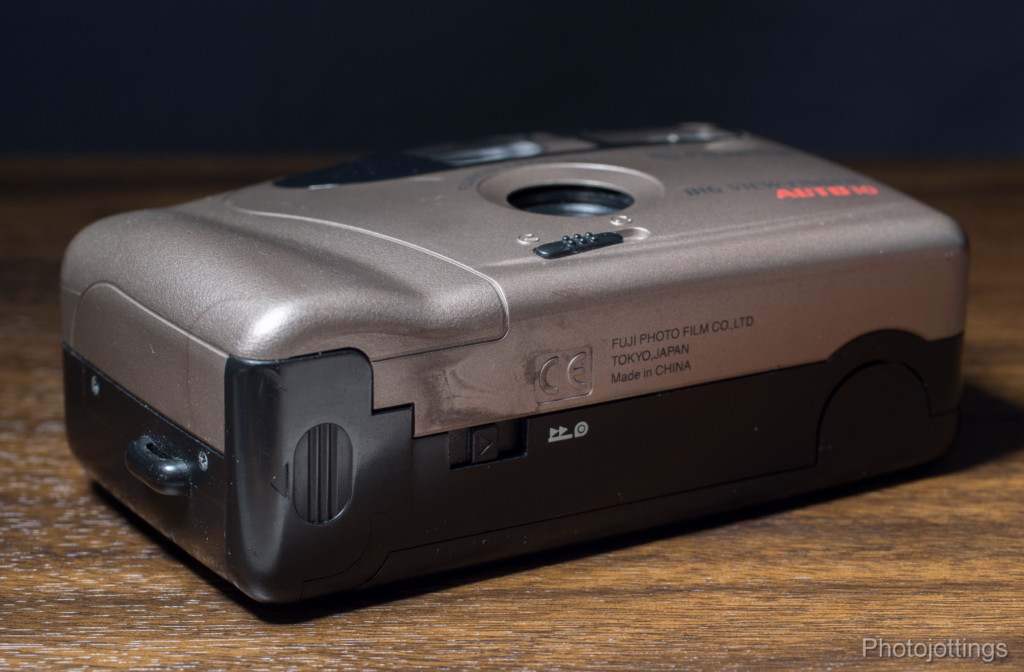
Here you can see the heavily worn bottom of the camera. The wrist strap lug is on the left, two AA batteries go in the compartment on the left, and the slot and arrow are for rewinding the film. It takes about a minute or more to fully rewind a 36 roll. Underneath the lens is the lens cover slider, you need to have it open for the camera to work.
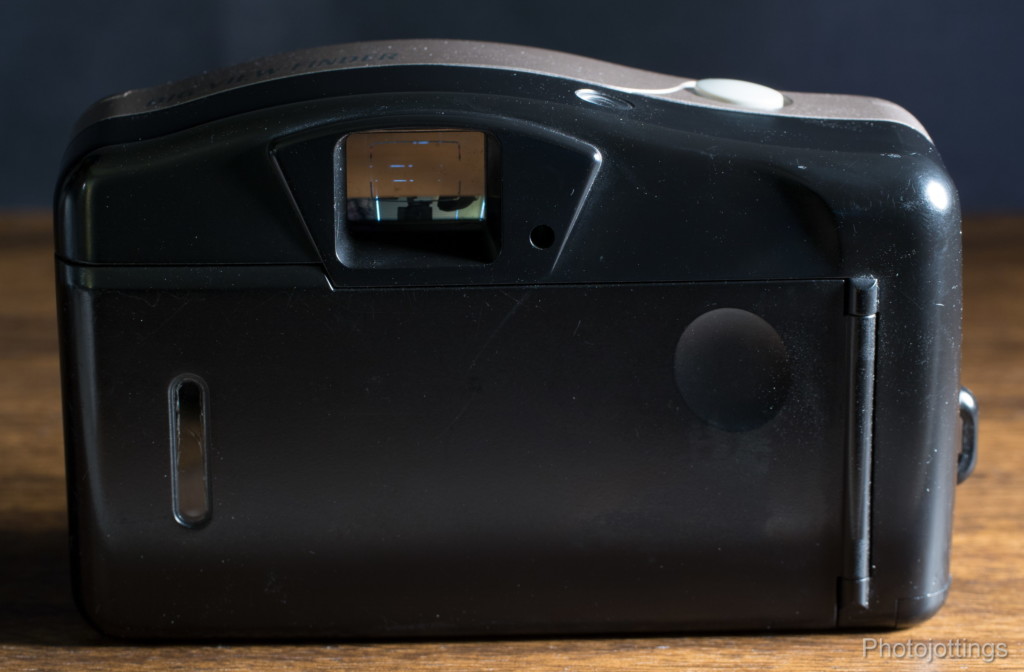
Nothing much to see here except the back of the view-finder, and the film reminder window. The little round hole next to the view-finder glows green when the flash is ready. Just visible on top is the shot counter window and the shutter button.

With the back open, we can see the DX contacts for either 100-200, or 400 speed film; it defaults to 100 on non DX coded film. On the back is a real pressure plate for a flat film gate, which is surprising; I would’ve thought it to be a curved gate based on the poor lens edge performance.

The viewfinder is surprisingly BIG and bright, with simple guide lines. The view is actually very bright outside of the guide lines, not dark as you see it here. It’s also sharper than what you see in this picture; it was taken with my cheap cell phone.
Here are some test images scanned on a Nikon Coolscan 9000 ED. All are 2400 pixels wide; there is no additional resolution from scanning at a higher sample rate. Kodak Gold 200 film. Click for larger images.
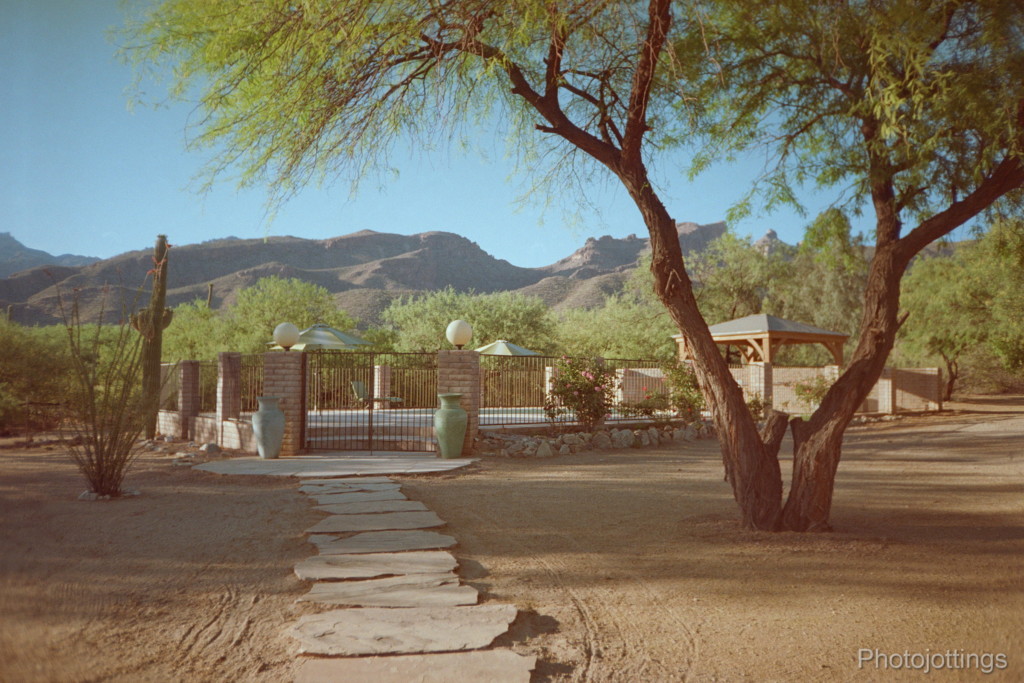
The lonely cement pond. Look at the very blurry corners, and the middle to upper right area.
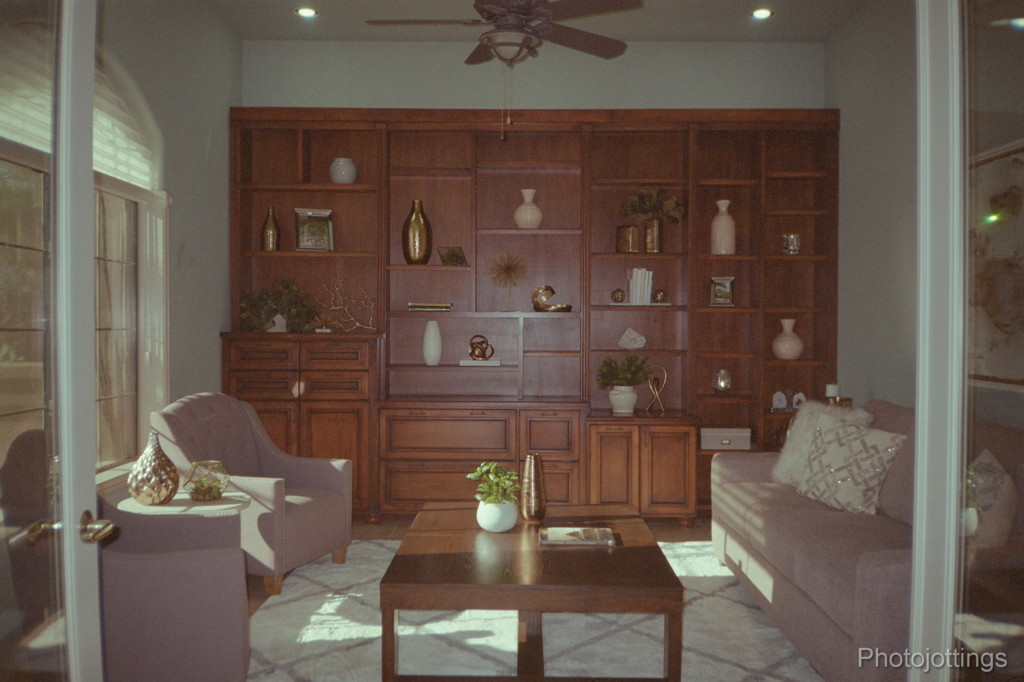
Smoking room. The flash was used here. Notice the barrel distortion on the white door frames.
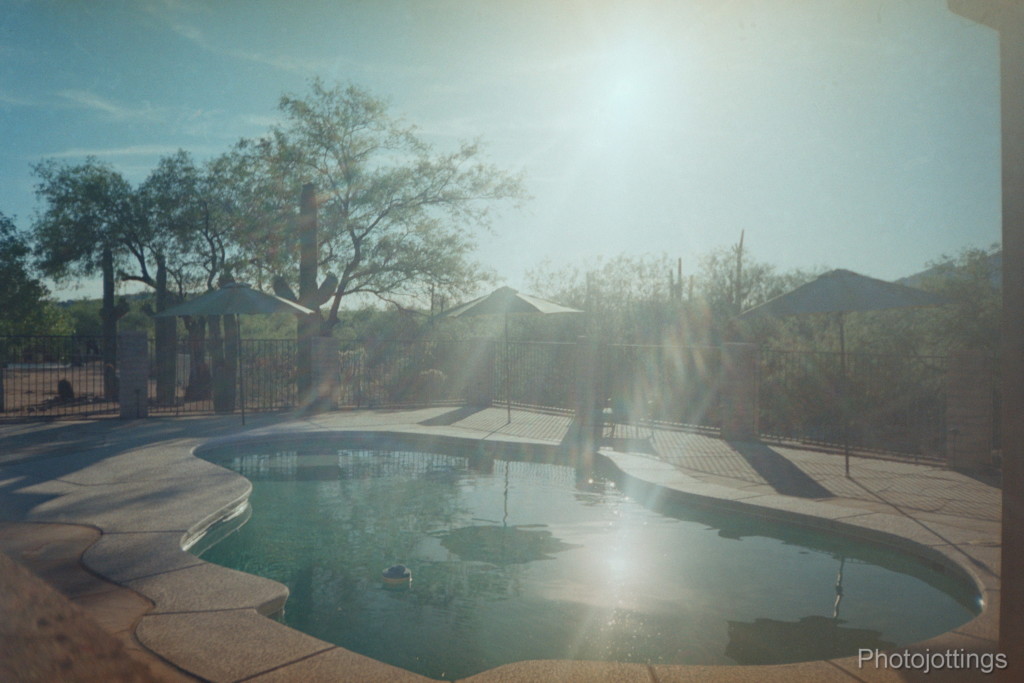
Don’t point this thing into the sun.
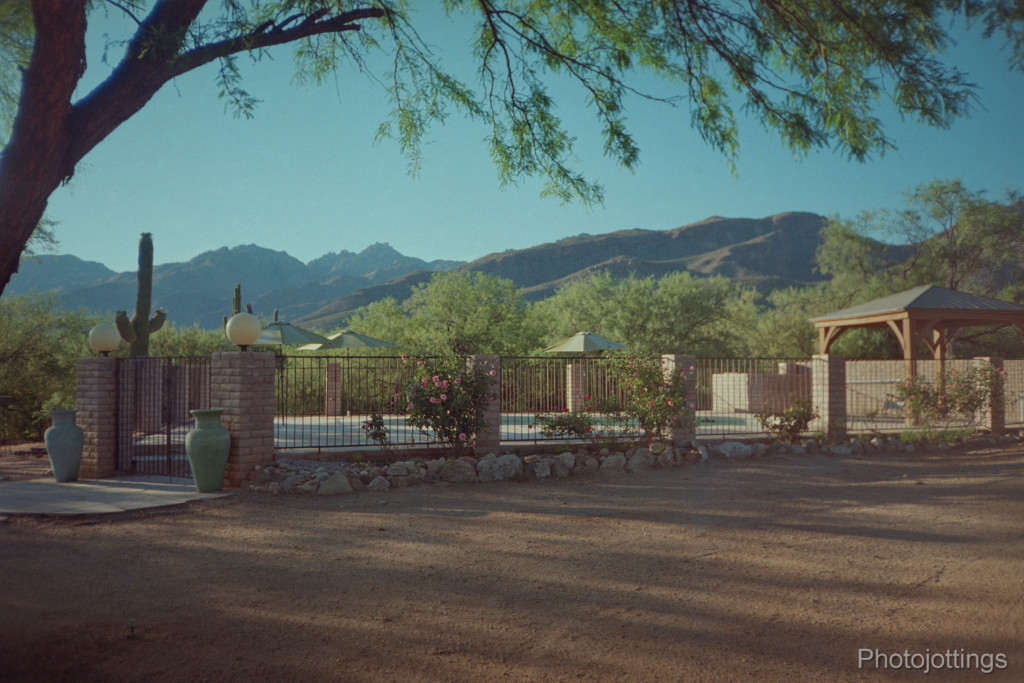
Another view of the cement pond with beautification roses. Notice the nasty blurry section on the right side.

Really small backyard, or really big pool. See the shadow of a creep in the lower left corner.
Conclusion.
The FujiFilm Big View-Finder Auto 10 is one of those cameras where you think to yourself, why did they make this?
I do like the wide angle lens; almost all point and shoot cameras back then were sporting 35mm lenses, so 29mm is something different. The flash is useful for lighting up subjects that are close to the camera, and the auto advance is great for one handed use.
Unfortunately, the biggest disappointment is the lens quality; it’s just short of being awful. So ok, the centers are actually pretty sharp, and that would be useful for a central subject, but for landscape pictures, the lens has poor contrast and is just too blurry around the periphery. The only reason someone might use this instead of a disposable camera would be film choice; otherwise you can get a Fuji quick snap or Kodak Fun Saver disposable for about the same price as a roll of film. The Fuji Big View-Finder reminds me of the Kodak Star 535, both have cheap two element lenses, but the 535 lens is noticeably better.
Anyhow, this is a one and done camera; I never really bonded with it, so off to Good Will it goes.
A much better camera for the same price would be something like this one.
Please consider buying your goodies through my links, doing so helps support the site, thanks!